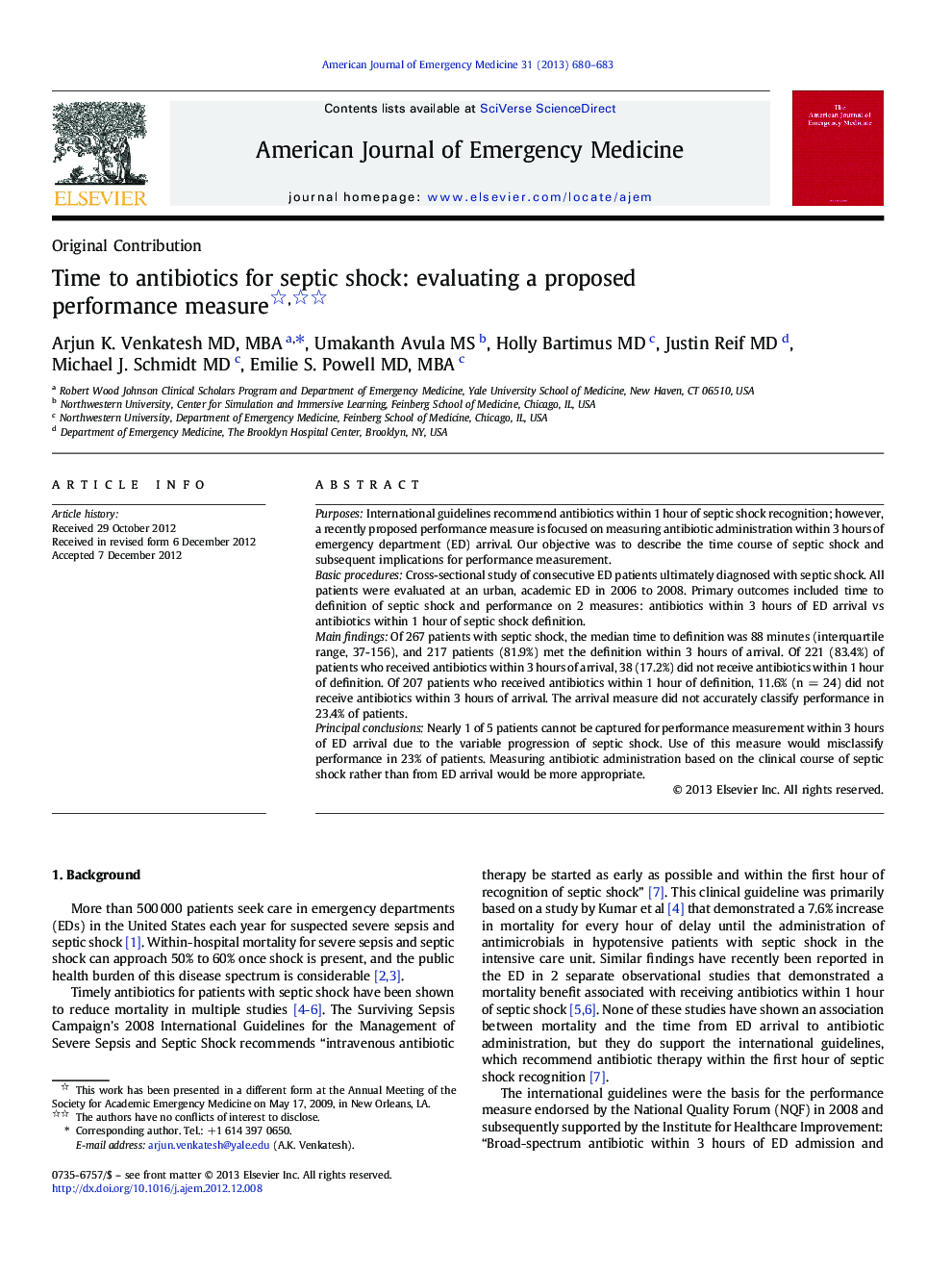| کد مقاله | کد نشریه | سال انتشار | مقاله انگلیسی | نسخه تمام متن |
|---|---|---|---|---|
| 3224989 | 1588131 | 2013 | 4 صفحه PDF | دانلود رایگان |

PurposesInternational guidelines recommend antibiotics within 1 hour of septic shock recognition; however, a recently proposed performance measure is focused on measuring antibiotic administration within 3 hours of emergency department (ED) arrival. Our objective was to describe the time course of septic shock and subsequent implications for performance measurement.Basic proceduresCross-sectional study of consecutive ED patients ultimately diagnosed with septic shock. All patients were evaluated at an urban, academic ED in 2006 to 2008. Primary outcomes included time to definition of septic shock and performance on 2 measures: antibiotics within 3 hours of ED arrival vs antibiotics within 1 hour of septic shock definition.Main findingsOf 267 patients with septic shock, the median time to definition was 88 minutes (interquartile range, 37-156), and 217 patients (81.9%) met the definition within 3 hours of arrival. Of 221 (83.4%) of patients who received antibiotics within 3 hours of arrival, 38 (17.2%) did not receive antibiotics within 1 hour of definition. Of 207 patients who received antibiotics within 1 hour of definition, 11.6% (n = 24) did not receive antibiotics within 3 hours of arrival. The arrival measure did not accurately classify performance in 23.4% of patients.Principal conclusionsNearly 1 of 5 patients cannot be captured for performance measurement within 3 hours of ED arrival due to the variable progression of septic shock. Use of this measure would misclassify performance in 23% of patients. Measuring antibiotic administration based on the clinical course of septic shock rather than from ED arrival would be more appropriate.
Journal: The American Journal of Emergency Medicine - Volume 31, Issue 4, April 2013, Pages 680–683